How you can get involved
Species recording helps inform our site management and conserve specific species.
We would like to hear from you if you are interested in:
- helping with planned surveys
- getting trained to carry out your own survey
Why we survey wildlife
Biodiversity is the variety of all life. One way of measuring biodiversity is the number of species across a given area or habitat. An increase in biodiversity often leads to a healthy, more productive site. Each year, we conduct a series of wildlife surveys across a range of sites.
This work helps us to:
- look at the diversity of a particular animal, plant and fungus groups (for example, different butterfly species)
- understand the effect of our management on open spaces and inform future management
- gain a clearer picture of biodiversity within the borough
- involve local communities
- monitor populations of protected species (for example, the Great Crested Newt)
- monitor for climate change impacts on local wildlife
- contribute data to national and global datasets which can be used to understand wider trends
Ways to get involved
Record your sightings
You can record information about any wildlife you may have seen in the borough using the Thames Valley Environmental Records Centre (TVERC) online recording service. Ad hoc sightings can be recorded using iRecord.
TVERC collects and holds information about wildlife in the borough, such as protected species records and designated sites such as Local Wildlife Sites. We use this information to help direct the management of our parks and open spaces, maximising their value for biodiversity. This information is also important for understanding and managing the impact of developments.
Become a citizen scientist
There are lots of recording schemes run by specialist groups. By taking part in a national scheme, you can contribute to large datasets collected across the country. This can help researchers understand trends.
The schemes often have their own resources and support, so can be a great way to get started with recording.
There are schemes for various levels of expertise, time commitment and different species groups.
Below we have picked out a selection of citizen science schemes you can get involved with through the year. The schemes may run over several weeks or months.
- PondNet Spawn Survey (Freshwater Habitats Trust)
- Big Garden Bird Watch (RSPB)
- Swift Mapper (RSPB)
- Sunset Survey (Bat Conservation Trust)
- The Big River Watch - springtime (Rivers Trust)
- Stag Beetle Count (PTES)
- Big Butterfly Count (Butterfly Conservation)
- Waxcap Watch (Plantlife)
- The Big River Watch - autumn (The Rivers Trust)
Big Hedgehog Map (PTES)
Other ways to get involved
Find out about practical volunteering opportunities on our countryside conservation pages.
To learn about what you can do in your garden to help Bracknell Forest's biodiversity, visit our gardening for wildlife page.
To find out what we're doing to encourage people and organisations to work together for biodiversity locally, visit our biodiversity action plan page.
What we survey
We monitor a selection of species across a range of habitats at our parks and open spaces.
Select a species below to find out what our monitoring has taught us.
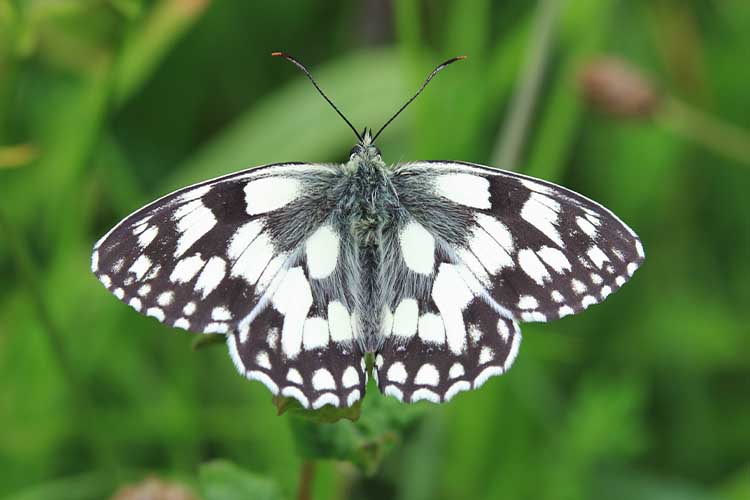
Butterflies are a beautiful group of insects found across most of our parks and open spaces.
Monitoring specific routes across sites and using focused surveys, we tracked the diversity of species and their changing populations.
Butterflies are valuable environmental indicators because we can learn from:
- their short life cycles
- their preference when caterpillars for specific plants
- how they respond to weather
Butterflies can tell us a lot about our site management and effects of a changing climate.
UK trends show 80% of butterfly species have decreased in abundance or distribution, or both, since the 1970s (The State of the UKs Butterflies 2022). More recent survey work done by Butterfly Conservation in 2024 found that the summer of 2024 was a poor year for butterflies.
We have recorded 32 species of butterfly across the borough. These included the rare Silver-Studded Blue, Grayling and Purple Emperor.
Monitoring is helping us to manage our meadows. The range of management techniques we've used are:
- the retention of some longer grasses for overwintering insects
- selective removal of invasive species
- hay cutting or grazing to reduce soil fertility and increase wildflower population
Species such as the Marbled White and Small Heath continue to be present in our meadows. We use a range of techniques to provide and improve the wildflower rich meadows and low fine grasses.
The Grayling populations have benefited from continuing scrub removal from our heathland sites. We hope that our focused effort to graze larger heaths too will also help stabilise the Silver-Studded Blue population.
Get involved
We may be able to monitor more sites for butterflies with the help of volunteers. If you have experience surveying butterflies and can commit to a weekly survey in spring and summer please get in touch using the enquiry form at the bottom of the page.
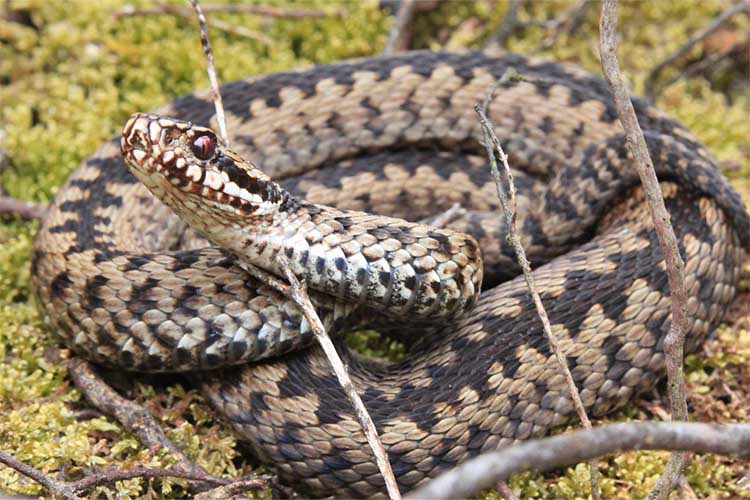
Reptiles are typically found in open habitats. The needs of each species tells us a lot about what we can do to improve their habitat.
If not managed correctly, habitats that do not meet the needs of reptiles can lead to a dramatic decline in their populations. 90% of Adder populations are in decline throughout the UK. They are now a conservation priority.
There are 6 reptiles native to the UK, 4 of these are found within Bracknell Forest. These consist of 2 species of lizard (Common Lizard and Slow Worm) and 2 species of snake (Grass Snake and Adder).
Monthly surveys of our heathland sites have shown us where reptiles regularly hibernate. They also tell us about their populations and distribution throughout our sites. This guides site management, helping us to improve habitats and links to other sites.
We conduct our monitoring across the following heathland sites:
- Englemere Pond
- Caesar’s Camp
- Wildmoor
- Buckler’s Forest
Buckler’s Forest is a designated Local Wildlife Site, partly due to its reptile populations. Reptile populations and distribution are doing well at Englemere and Caesar’s Camp. Wildmoor is showing signs of increased scrub and other overgrowth. To improve Wildmoor habitats for reptiles, our management is focusing on decreasing this.
Get involved!
We may be able to monitor more sites for reptiles with the help of volunteers. Some training would be required, and you would need to be able to visit the site for a few hours once a month. If you are interested, please get in touch using the enquiry form at the bottom of this page.
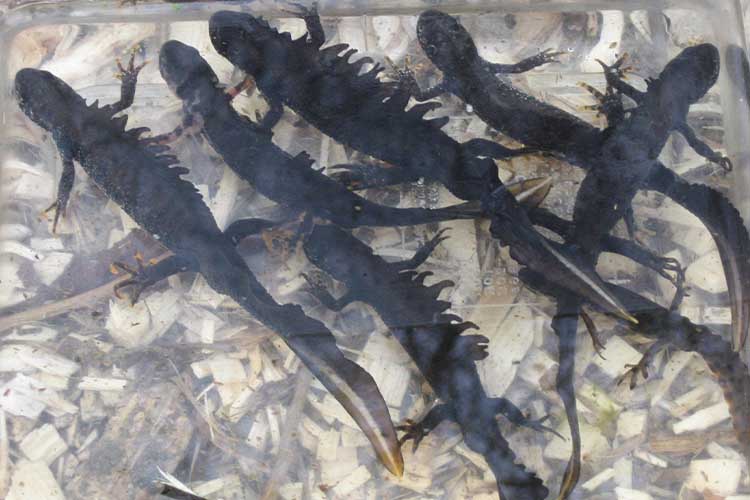
Newts live on dry land most of the year and use ponds to breed in the spring. They need a mixture of shelter, hibernation areas, feeding areas and access to water.
Our most famous newt, the Great Crested Newt, is a European protected species. They are protected due to the massive decline in their populations. Because of this, a licence is needed to disturb this species and their habitat. This includes surveying.
There are 3 native species of newt and all can be found in Bracknell Forest. They are:
- Great Crested Newt which is present in a range of ponds
- Smooth Newt which prefers water with a neutral pH
- Palmate Newt which prefers more acidic, heathland ponds
We monitor sites where Great Crested Newts are present to keep track of their populations. We also monitor smaller sites for future landscape management.
Although colder springs can affect results, newt populations in Bracknell Forest are seen to be currently stable.
We survey newts during spring evenings when they are more active. Our licensed rangers use specially designed bottle traps to carefully capture the newts and record data.
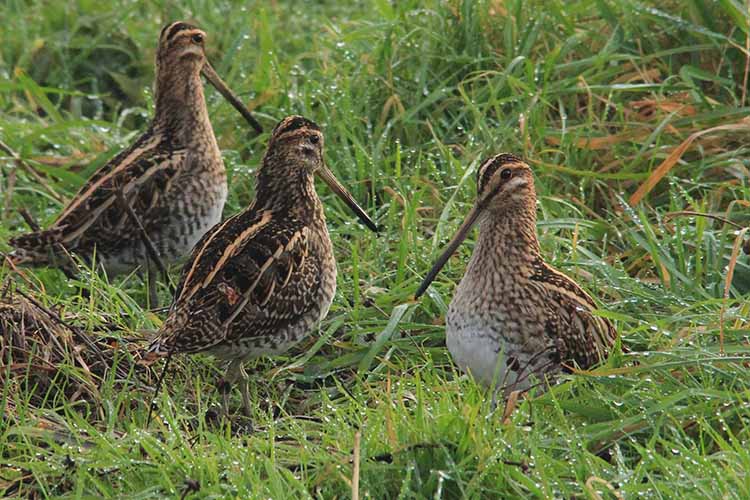
Birds play an important role in every healthy ecosystem.
Nationally, many bird species have experienced severe declines over the years. The biggest decline is amongst birds found in and around farmland. Changes in agriculture have led to a reduction in suitable farmland habitat.
During spring, we monitor several sites using a set breeding bird survey. Records inform our ongoing site management.
Volunteers carry out regular wetland environment bird surveys at our main wetland site, Horseshoe Lake. 18 species of waterfowl are recorded each winter.
We undertake specific monitoring at locations such as the bird island in Horseshoe Lake. Created in 2019, the island is now home to the following breeding species:
- Oystercatcher
- Black-Headed Gull
- Common Tern
- Little-Ringed Plover
We have surveyed breeding Skylarks on sites such as Cabbage Hill, Frost Folly and Peacock Meadows. As a ground nesting bird, they are vulnerable to disturbance. We continue to monitor farmland birds including Skylark at Frost Folly as part of a breeding bird survey.
In the Thames Basin Heaths Special Protection Area (SPA) are birds of special interest. They include the Nightjar, Woodlark and Dartford Warbler. We monitor these and they are also monitored by external ecologists. There are good numbers of the Dartford Warbler and Nightjar. Currently, there is not enough suitable habitat for the Woodlark at Wildmoor.
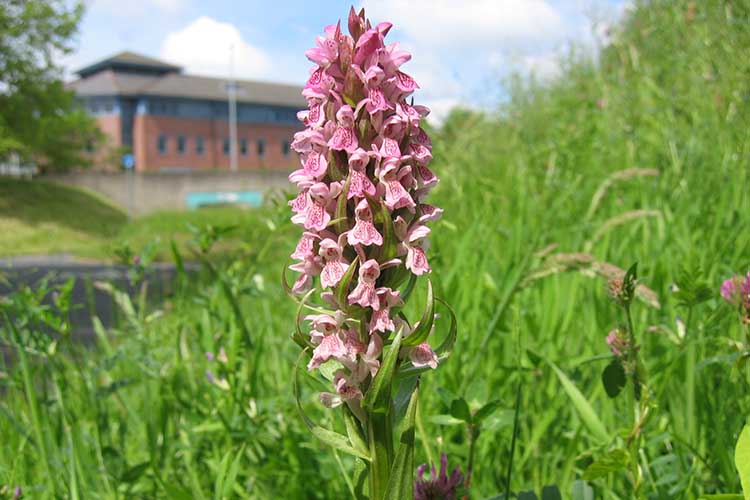
Wildflower meadows have declined by 97% since the 1940s due to changes in agriculture.
They are an integral part of the British countryside and important for wildlife conservation.
Meadows with a rich diversity of wild plants are the best for wildlife. We can help maintain these wildflowers by reducing soil fertility. This reduces competition from more dominant species, such as grasses.
A rich, diverse meadow is home to a greater number of insects and other bugs (invertebrates). These are an important food source for larger predators, such as birds (especially during the main breeding season).
We survey our meadows throughout the growing season. We do this using quadrats (set squares). We record the species inside the square, along with the percentage they cover.
We then compare this to the local wildlife site thresholds (from the Thames Valley Environmental Records Centre). The threshold for meadow wildflower composition is a minimum of 15 species per square metre.
Many of our meadows are newly created (often by converting rough grassland or agricultural land). Because of this, they usually reach just under the threshold. Through continuing management and monitoring, the meadows will evolve over time.
There are up to 10 species of wild orchid in Bracknell. These include the Heath-Spotted, Bee, Pyramidal and Southern-Marsh with known sites annually monitored.
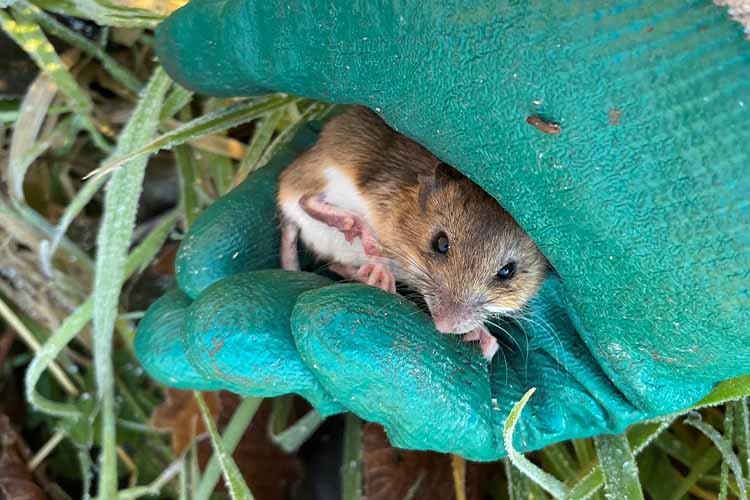
Many of the UK's mammals have suffered from severe declines over the last 50 years.
Iconic British species have seen populations plummet. These include hedgehogs, harvest mice, shrews, stoats and weasels.
These smaller mammals serve a key role within an ecosystem. Some are a valuable food source for larger mammals, reptiles and birds of prey. Others are exceptional predators themselves and help maintain stable populations of other species.
Bracknell Forest has a diversity of habitats, which supports 27 different mammal species.
We are currently surveying for hedgehogs in several of our woodland sites. At Mill Lane we are helping to protect this vulnerable species by putting up fencing to discourage them from crossing busy roads.
We survey a variety of our sites for small mammals such as mice and voles to monitor how well they are doing. With help from volunteers, we undertake humane trapping and searching for nests.
We recorded 36 Harvest Mice nests at Shepherd Meadows in 2024. This has increased since 2021, when only 19 nests were recorded. Harvest Mice are known to be in decline across the UK. The boost to local populations is thanks to proactive ongoing management work.
Actions we have taken in response to our data collection include:
- cutting areas of reedbed or grassland on rotation
- fencing off areas of our sites to help protect nests
- creating wider field margins that link to other suitable areas to help increase populations
Get involved
Volunteers help us to survey multiple sites each winter.
Harvest Mouse nest searches require a little training and then can be carried out in your own time in the autumn and winter at suitable sites.
For our broader small mammal surveys, we use humane traps which are put out overnight, with the small mammals counted and released in the morning. Help may be needed with setting up in the evening, checking the traps in the morning, and cleaning the traps between surveys. We currently have enough volunteers, but spaces may become available.
If you would like to get involved, please get in touch using the enquiry form at the bottom of this page.
